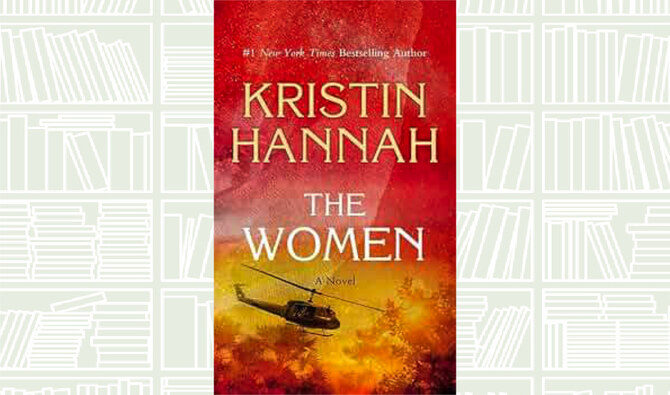Kristin Hannah’s “The Women” is a powerful and evocative exploration of women navigating the complexities of personal and societal challenges.
Set against the backdrop of the Vietnam War, the novel captures the essence of female resilience, friendship, and the bonds that connect women across generations.
Initially, the plot didn’t grab me. I was intrigued by the premise of women serving as nurses during the Vietnam War, but I wasn’t overly excited to dive in.
However, once I started reading, I found myself completely captivated — a testament to Hannah’s exceptional storytelling.
The novel introduces us to a compelling main character from an affluent family whose older brother volunteers for the military and heads to Vietnam.
This sets the stage for her internal conflict: Torn between societal expectations and her own desires, she decides to follow him by enlisting as a nurse.
This choice thrusts her directly into the heart of the war, allowing readers to witness not just her experiences but also the broader challenges faced by women in such roles during that tumultuous time.
Hannah’s vivid portrayal of the wartime environment struck me. Her descriptions of the sights, sounds, and even smells of Vietnam made the setting incredibly real.
I felt immersed in the oppressive heat and distant sounds of conflict; it was as if I were experiencing the war alongside the characters.
As I progressed through the book, I realized it felt like three distinct parts, each evoking different reactions.
The first part, set in Vietnam, was intense and gripping. The character development was exceptional; each nurse had a unique voice, making them relatable and memorable.
The second part deals with the main character’s return to the US. This transition is portrayed with sensitivity, capturing the struggles of veterans adjusting to civilian life after the horrors of war.
Many readers, especially those with military experience, will find that this section resonates with them. The contrast between the chaos of the battlefield and the mundanity of daily life highlights the inner turmoil facing returning soldiers and the societal indifference they often encounter.
In the third section, toward the end of the novel, the character has completed her journey.
She has learned a lot, and she has begun to recover, as has America, from the war. The reader is shown the life that she has established for herself, and it left me wanting more.
Hannah skillfully depicts the political climate surrounding the Vietnam War, including the protests and shifting public opinions.
This adds another layer, highlighting how changing attitudes affected both soldiers and the women who supported them.
“The Women” is a beautifully crafted narrative that transcends its initial premise to explore profound themes of identity, resilience, and the complexities of war.
Hannah’s powerful storytelling and deep character development make this a must-read, transforming what began for me as a lukewarm interest into an unforgettable literary experience.
This book not only tells the story of women in war but also invites readers to reflect on the lasting impact of conflict on individuals and society. I wholeheartedly recommend it. This story will stay with you long after you turn the last page.

























